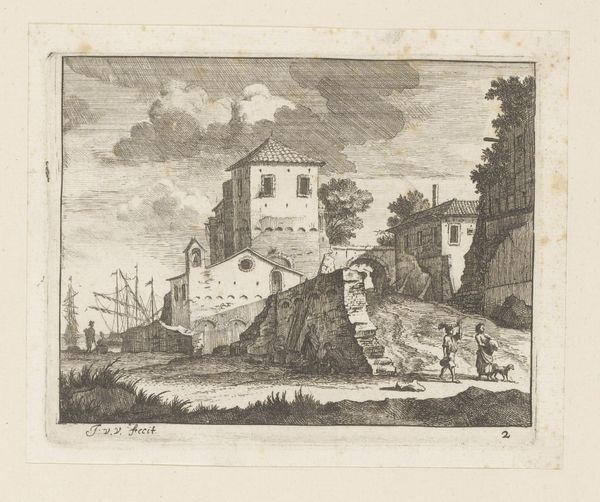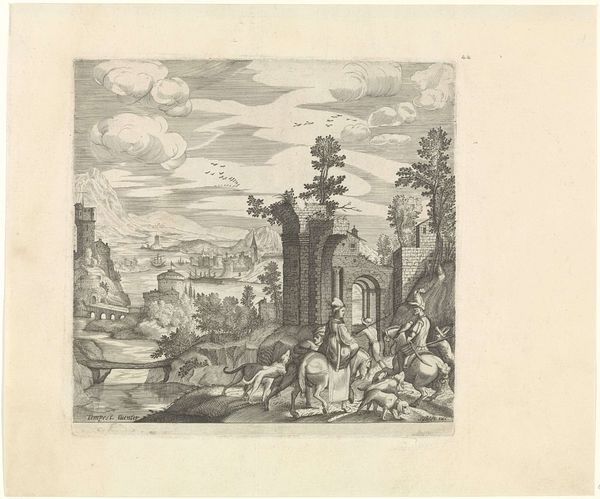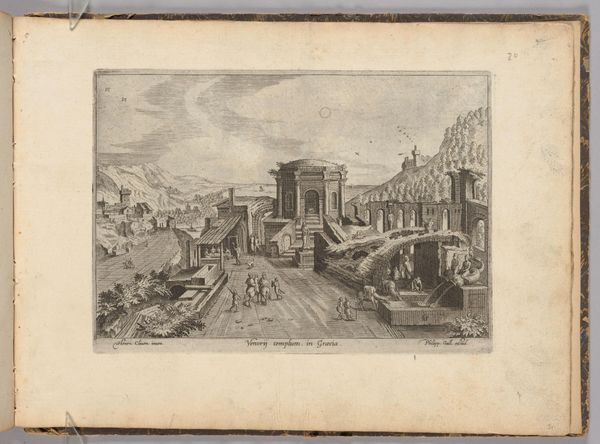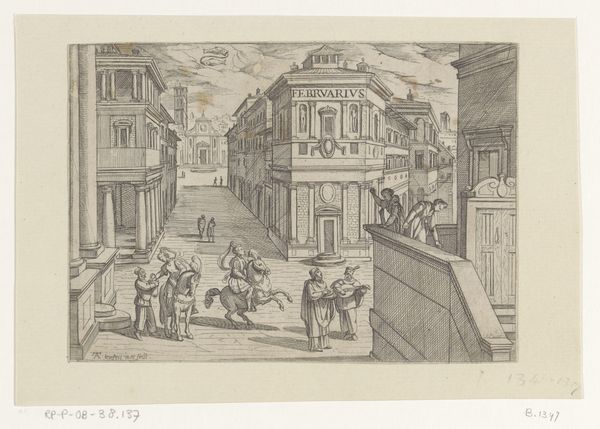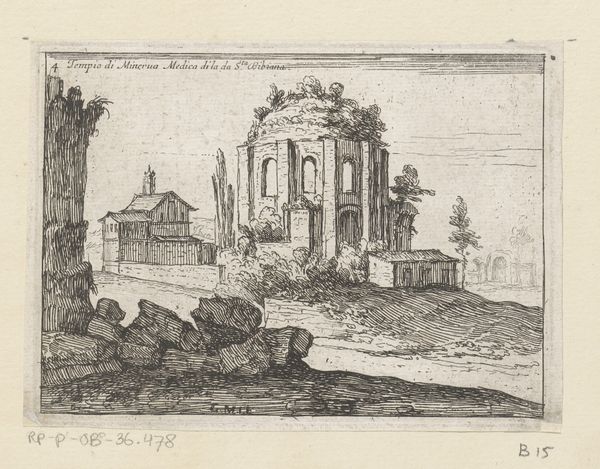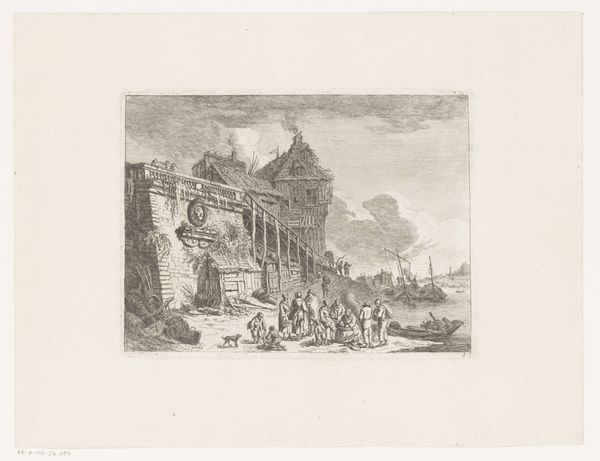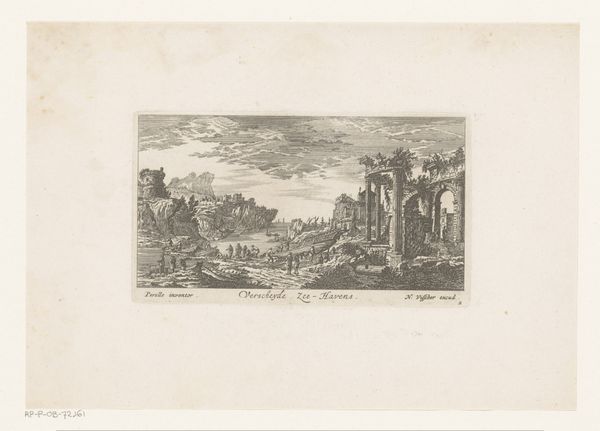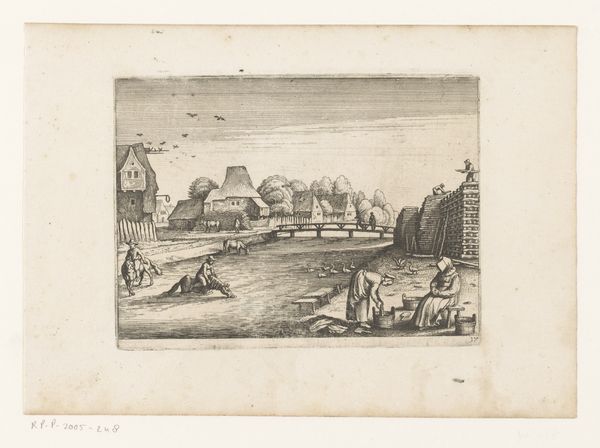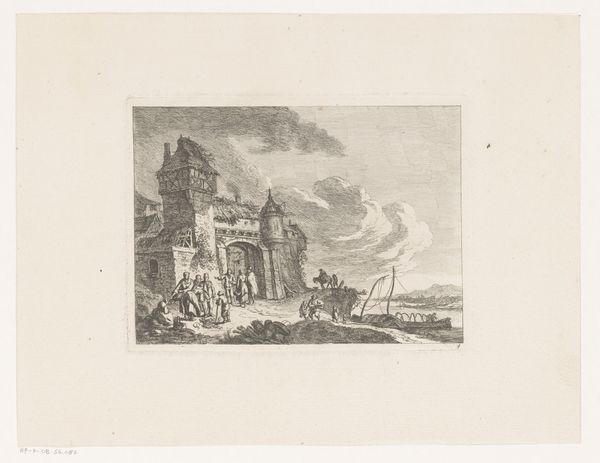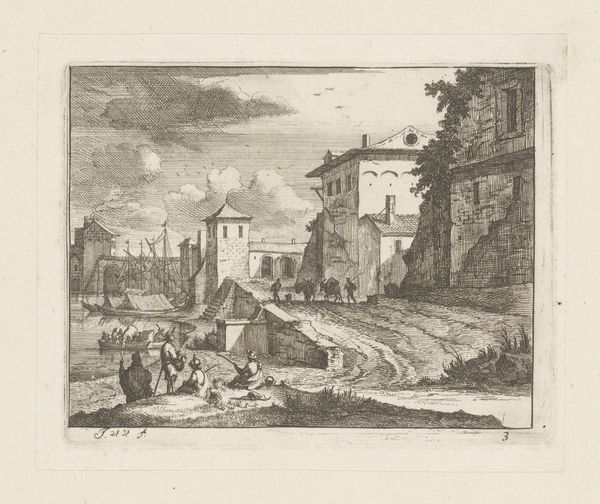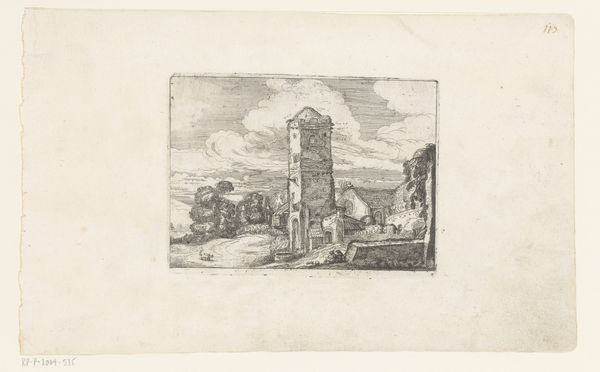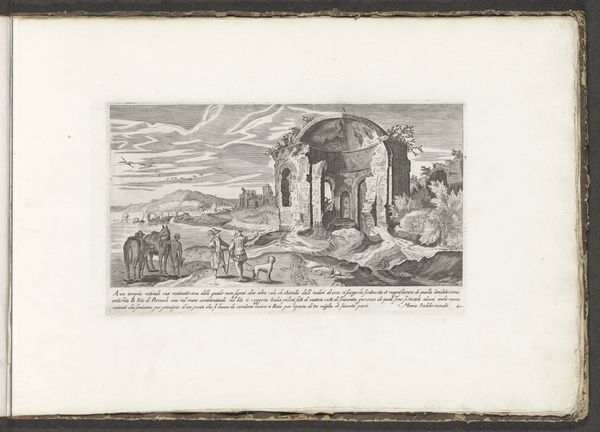
print, engraving
#
baroque
# print
#
landscape
#
form
#
line
#
history-painting
#
italian-renaissance
#
engraving
Dimensions: height 124 mm, width 173 mm
Copyright: Rijks Museum: Open Domain
Antonio Tempesta created this print called, Januari: visscène (waterman), a waterscape scene, sometime between 1555 and 1630. Tempesta was an Italian artist whose career spanned the late Renaissance into the Baroque era; his work often reflected the grand, sweeping narratives and dramatic contrasts characteristic of that time. The engraving depicts men slaughtering a pig, a scene symbolic of January, the month signifying new beginnings and transitions. Consider the labor involved and the communal aspect of this task. The slaughter of animals was an integral part of the agricultural cycle, deeply connected to survival and community sustenance. But think about the broader implications: Whose labor is valued, and whose is rendered invisible? As you reflect on the print, consider Tempesta's world, one steeped in both artistic innovation and rigid social hierarchies. Does this artwork maintain traditional representations, or does it subtly develop alternative narratives? This print is a meditation on the flow of time, our relationship to the natural world, and the cycles of life and death that define our shared existence.
Comments
No comments
Be the first to comment and join the conversation on the ultimate creative platform.
